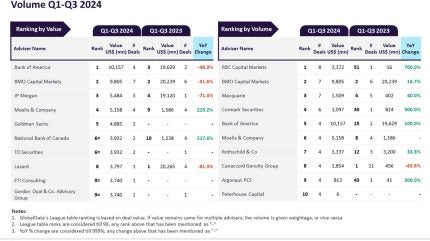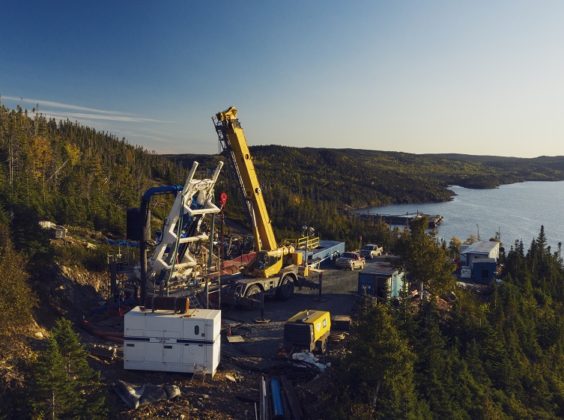The Global Energy Perspective 2023 models the outlook for demand and supply of energy commodities across a 1.5°C pathway, aligned with the Paris Agreement, and four bottom-up energy transition scenarios. These energy transition scenarios examine outcomes ranging from warming of 1.6°C to 2.9°C by 2100 (scenario descriptions outlined below in sidebar “About the Global Energy Perspective 2023”). These wide-ranging scenarios sketch a range of outcomes based on varying underlying assumptions—for example, about the pace of technological progress and the level of policy enforcement. The scenarios are shaped by more than 400 drivers across sectors, technologies, policies, costs, and fuels, and serve as a fact base to inform decision makers on the challenges to be overcome to enable the energy transition. In this article, we examine integrated energy and pricing value pools and their outlook.
Growing global momentum is accelerating the energy transition. This was recently evidenced by the UAE Consensus, delivered at COP28 on December 13, 2023, that called on Parties to implement several key steps: triple renewable energy capacity globally and double the global average annual rate of energy efficiency improvements by 2030; accelerate efforts toward the phase-down of unabated coal power; accelerate efforts globally toward net zero emission energy systems by utilizing zero- and low-carbon fuels well before or around mid-century; and transition away from fossil fuels in energy systems in a just, orderly, and equitable manner and accelerate action in this critical decade to achieve net zero by 2050.
Recognizing the advancing transition could see a positive shift in market competitiveness for renewables as they are scaled up and unabated fossil fuels are scaled down. This perspective considers how developments in the past 24 months have led to a shift in the discussion on energy value pools, with industrial competitiveness being a key incentive and driver for the energy transition.
Recent developments have deeply impacted the global energy system and have highlighted accelerators and challenges for the energy transition, including:
- a renewed focus on affordability, reliability, and industrial competitiveness alongside emissions reduction;
- variability across countries and regions on energy system modernization and which technologies will lead; and
- an increased awareness of the key bottlenecks, including critical materials and land shortages, that could impact the shape of the transition.
Transition accelerators that have emerged mostly relate to current government support and investment momentum in low-carbon technologies. The latest government initiatives that aim to support the energy transition, such as the Inflation Reduction Act (IRA) in the United States, the European Union’s Green Deal Industrial Plan, and Japan’s green transformation plan, aim to act as growth triggers for low-carbon investments and technologies.
The uptake of low-carbon technologies, including heat pumps and electric vehicles (EVs), continued to accelerate in 2022, and multiple low-carbon technologies are becoming increasingly efficient. The last two years have seen record investments into the energy transition, reaching around $1.8 trillion in 2022. Lastly, there have been continued commitments and investment decisions toward net zero by major industrial players, in, for example, the automotive, oil and gas, materials, and financial sectors, though more will be needed.
Transition challenges include increasing costs throughout the energy system following the European energy crisis, cost inflation on many renewable projects, affordability challenges, slower-than-expected realization of some low-carbon projects, such as green hydrogen projects, and, as a result, shifts in societal sentiment around renewable projects, and ongoing fossil fuel demand. Analysis from multiple sources, including the IEA, IPCC, and McKinsey, suggest that conventional fossil fuels are likely to remain a part of the energy mix to 2050, even in a 1.5° scenario, and may act as a bridge for an orderly transition. Renewable projects have seen cost increases for the first time in more than 20 years due to rising raw material costs and increasing interest rates. There has been pipeline uncertainty for new wind, hydrogen, and carbon capture, utilization, and storage (CCUS) projects. Only 10 gigawatts (GW) of wind projects have been financed in the European Union over the last 24 months, falling short of the 30 GW per year needed to meet climate commitments, and only 9 percent of hydrogen projects reached final investment decisions (FIDs)., McKinsey, November 21, 2023. Coal (the most carbon-intensive fuel source without CCUS) is expected to be phased out gradually. Coal demand is projected to decrease by between 25 and 85 percent between 2019 and 2050 depending on the scenario, driven mainly by the phaseout of coal plants in the power sector across regions., McKinsey, November 21, 2023.
To manage a system which is moving more toward fixed costs, updates to power market designs may be needed
In most markets today, conventional assets (such as coal, gas, oil, nuclear, and hydro) provide energy in the market as well as firming capacity. With the further expected growth in solar and wind capacity, the role of conventional plants may be decoupled, moving from providing both the primary source of energy and firm capacity to largely providing firming and flexibility in the system. As a marginal market price is projected to correlate with short-run marginal costs across the system, additional remuneration could be needed for asset types to remain profitable to enable their continued operation and especially to fund the technologies required to abate emissions from these operations. By 2040, up to 15 percent of revenues from nuclear assets, 50 percent of revenues from gas assets, and 65 percent of revenues from coal assets may need to come from market mechanisms other than marginal energy production payments for these technologies to remain viable in order to meet remaining transition demand.
Renewable assets with fixed (non-dispatchable) outputs may be subject to correlation effects that drive down prices during periods of high wind and solar production. This will tend to decrease the capture price of those technologies, where variable prices no longer link to total lifecycle cost of production. Out-of-market payments, such as contracts for difference or power purchase agreements, which often include renewable energy certificates which show that a given plant produces renewable power, will likely continue to be needed to secure financing.
Dispatchable thermal capacity, such as gas plants, are more likely to maintain positive returns in geographies with lower fuel costs, such as in the United States. Similarly, clean technologies, such as CCUS, are expected to leverage a variety of market payments as well as support initiatives to maintain profitability.
Regarding older conventional technologies, coal is likely to be largely retired in the near future, while other unabated carbon-emitting technologies will likely run less frequently than they do at present. Nevertheless, as renewable power is ramped up, managing conventional technologies still in use to minimize their environmental impact could be an important concern.
Revenue mechanisms could include capacity markets and payments, subsidies, regulated prices, active markets for clean energy certificates, and contracts for difference to limit uncertainty. Some of these mechanisms already exist in markets globally.
To request access to the data underlying our Global Energy Perspective, or to speak to our team about bespoke market reports or analyses, please contact us.




